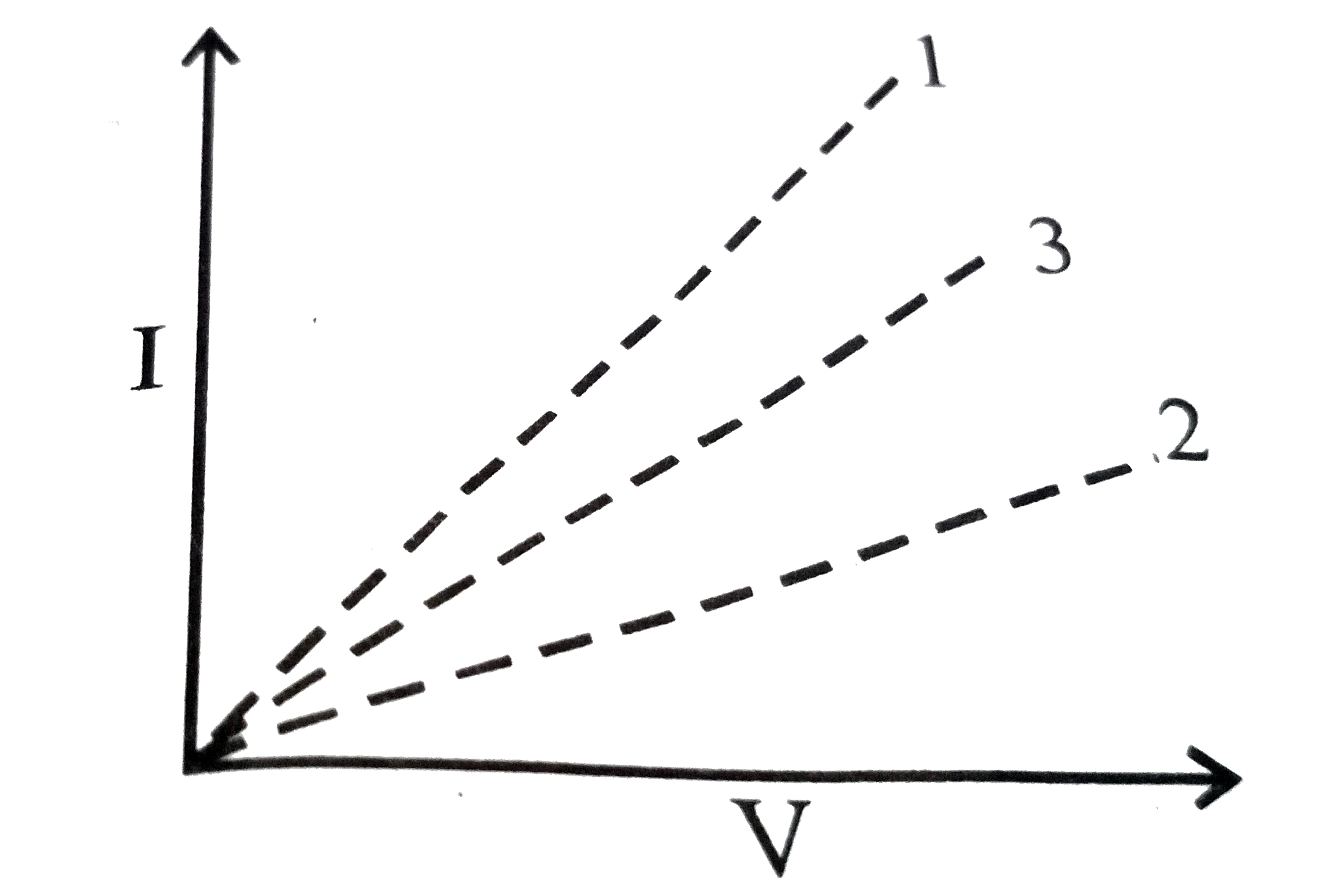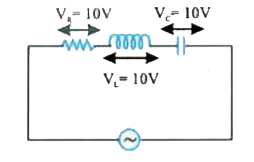Current versus voltage (I – v) graphs for two different series L–C–R circuits have been shown in adjoining diagram. R1andR2 are resistances of the two circuits. Which one is greater– R1orR2?

Video Solution
Text Solution
R1>R2 as I is smaller in larger resistance.
|
Topper's Solved these Questions
- UNIT–III & UNIT–IV MAGNETIC EFFECTS OF CURRENT AND MAGNETISM & E.M.I. AND ALTERNATING CURRENTBOOK - CBSE COMPLEMENTARY MATERIALCHAPTER - UNIT–III & UNIT–IV MAGNETIC EFFECTS OF CURRENT AND MAGNETISM & E.M.I. AND ALTERNATING CURRENTEXERCISE - SHORT ANSWER QUESTIONS (2 Marks)
41 Videos
- UNIT–III & UNIT–IV MAGNETIC EFFECTS OF CURRENT AND MAGNETISM & E.M.I. AND ALTERNATING CURRENTBOOK - CBSE COMPLEMENTARY MATERIALCHAPTER - UNIT–III & UNIT–IV MAGNETIC EFFECTS OF CURRENT AND MAGNETISM & E.M.I. AND ALTERNATING CURRENTEXERCISE - SHORT ANSWERS QUESTIONS (3 Marks)
27 Videos
- SAMPLE QUESTION PAPER 2019BOOK - CBSE COMPLEMENTARY MATERIALCHAPTER - SAMPLE QUESTION PAPER 2019EXERCISE - Section C
19 Videos
Similar Questions
Knowledge Check
The current in the series L-C-R circuit is
Ai=imsin(ωt+ϕ)Bi=vm√R2+(Xc−XL)2sin(ωt+ϕ)Ci=2imcos(ωt+ϕ)DBoth (a) and (b)In the circuit shown in the given figure, the resistances R1andR2 are respectively
 A14Ωand40ΩB40Ωand44ΩC40Ωand30ΩD14Ωand30Ω
A14Ωand40ΩB40Ωand44ΩC40Ωand30ΩD14Ωand30ΩThe current growth in two L-R circuits (b) and (c) is as shown in Fig. Let L1,L2,R1andR2 be the corresponding values in two circuits. Then
 AR1>R2BR1=R2CL1>L2DL1<L2
AR1>R2BR1=R2CL1>L2DL1<L2
Calculate the current in bracnhes containing R1,R2andR3 in the circuit shown in

View SolutionThe graphs between current (1) and voltage (v) for three linear resistors 1,2 and 3 are given below:

If R1,R2 and R3 are the resistances of these resistors, then which one of the following is correct?
View SolutionConsider the circuit shown in fig.

Assuming R1=2Ω, current passing through resistance R1 is
View SolutionCurrent growth in two L-R circuits (b) and (c ) as shown in figure (a). Let L1,L2,R1 and R1 be the corresponding values in two circuits. Then

View SolutionIn the given circuit, if I1andI2 be the current in resistances R1andR2, respectively, then
 .
.
View Solution

